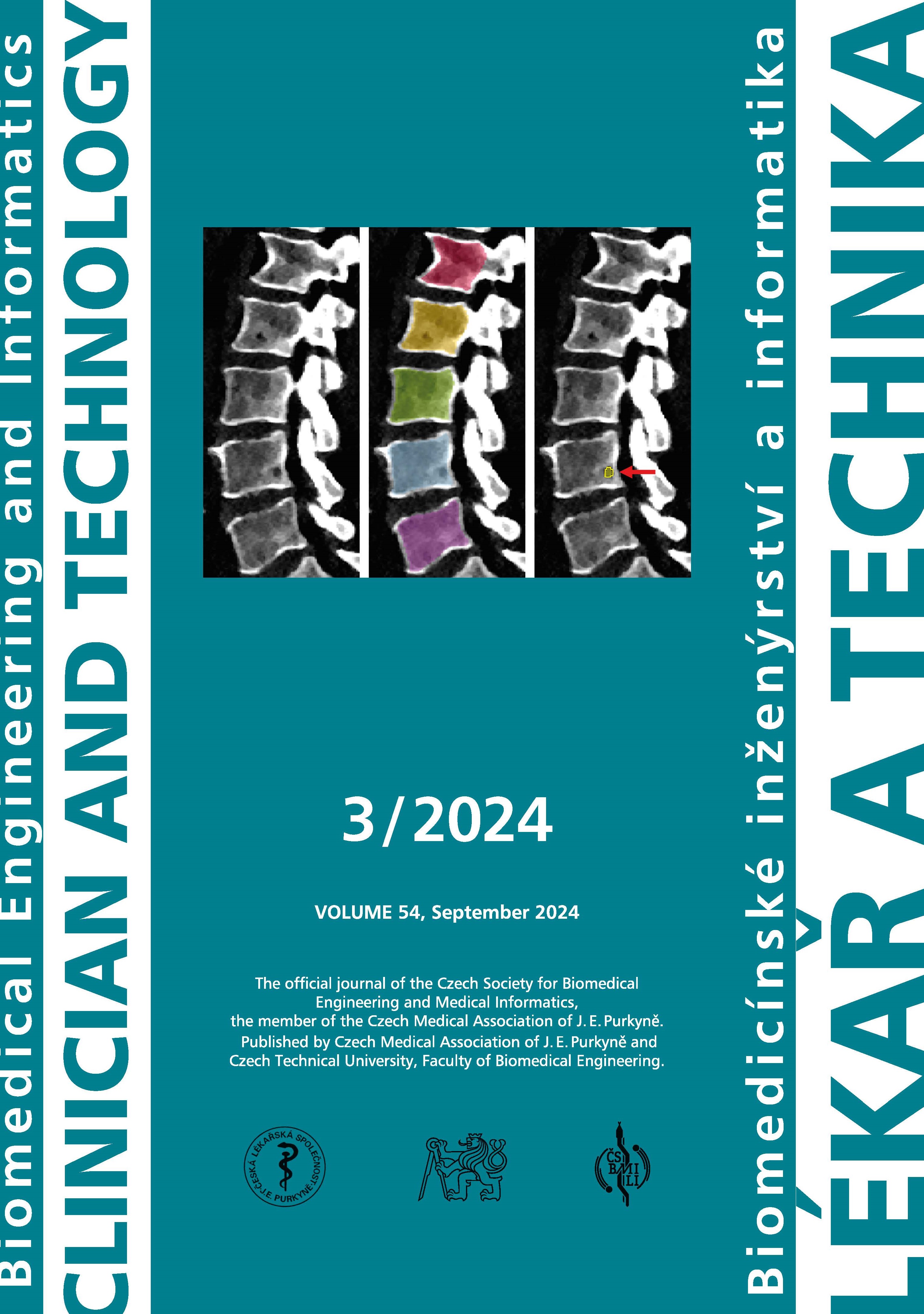APPLICATION OF NEURAL NETWORKS IN SILICONE BREAST IMPLANT DIAGNOSTICS ON MAGNETIC RESONANCE IMAGING
DOI:
https://doi.org/10.14311/CTJ.2024.3.02Abstract
Breast augmentation is one of the most frequently performed cosmetic procedures worldwide, but it carries certain risks including breast implant rupture. Timely and accurate diagnostics of ruptures are crucial, as undiagnosed ruptures can lead to serious health complications. Imaging methods, such as magnetic resonance imaging (MRI), are recommended for the diagnosis of breast implants due to their high accuracy. However, current diagnostics rely heavily on the subjective interpretation and experience of the physician. This study investigates the potential of neural networks (NN) to address this limitation and improve the accuracy of rupture detection in silicone breast implants. We applied a deep learning-based neural network system trained on MRI images of breast implants to detect ruptures. The dataset included annotated MRI scans of symptomatic and asymptomatic patients with confirmed implant integrity or rupture. Several models were trained using ResNet-18, ResNet-50, and Xception networks, with various hyperparameter settings and augmentation techniques applied to enhance model performance and generalizability. The performance of the NN model was evaluated using confusion matrices and standard metrics such as true positive rate (TPR) and true negative rate (TNR). A semi-automated algorithm for the detection of intracapsular ruptures of breast implants on MRI was successfully developed. The algorithm correctly detected ruptures in 95.4% of cases and accurately identified cases without rupture in 86.7% of instances. Our findings highlight the potential of neural networks as a supportive tool in diagnosing breast implant ruptures. By semi-automating rupture detection, NNs can reduce diagnostic errors, expedite image evaluation, and optimize resource use in medical practice. The study underscores the importance of combining artificial intelligence with expert evaluation to enhance patient care and reduce costs in medical diagnostics.
Downloads
Published
Issue
Section
License
Copyright (c) 2024 Barbora Mašková, Miroslav Vavroušek, Josef Bárta, Martin Rožánek

This work is licensed under a Creative Commons Attribution 4.0 International License.
Authors who publish with this journal agree to the following terms:
- Authors retain copyright and grant the journal right of the first publication with the work simultaneously licensed under a Creative Commons Attribution License (https://creativecommons.org/licenses/by/4.0/) that allows others to share the work with an acknowledgment of the work's authorship and initial publication in CTJ.
- Authors are able to enter into separate, additional contractual arrangements for the non-exclusive distribution of the journal’s published version of the work (e.g., post it to an institutional repository or publish it in a book), with an acknowledgment of its initial publication in this journal.
- Authors are permitted and encouraged to post their work online (e.g., in institutional repositories or on their website or ResearchGate) prior to and during the submission process, as it can lead to productive exchanges.
CTJ requires that all of the content of the manuscript has been created by its respective authors or that permission to use a copyrighted material has been obtained by the authors before submitting the manuscript to CTJ. CTJ requires that authors have not used any copyrighted material illegally, as for example a picture from another journal or book, a photo, etc. It is the author’s responsibility to use only materials not violating the copyright law. When in doubt, CTJ may ask the authors to supply the pertinent permission or agreement about the use of a copyrighted material.
The opinions expressed in CTJ articles are those of authors and do not necessarily reflect the views of the publishers or the Czech Society for Biomedical Engineering and Medical Informatics.


